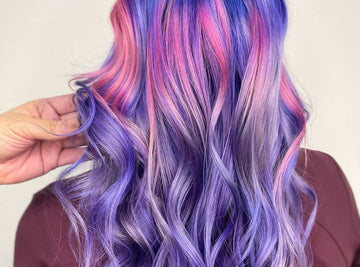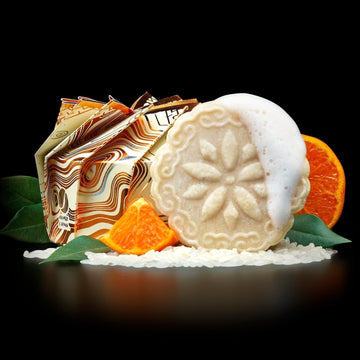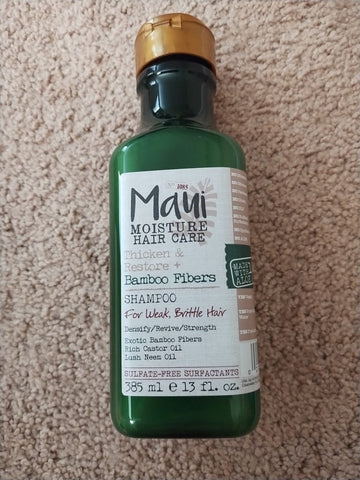Perm that looks like a volume-up hairstyle is a hairstyle that people who are concerned about thinning hair want to try once. “Can I apply a perm even with thinning hair?” “Can thinning hair progress due to perm?”
For those who suffer from thinning hair, we would like to solve such questions firmly. In this article, we will introduce a scalp-friendly perm while explaining the precautions and risks that people with thin hair should remember when applying a perm.
If you want to make thin hair less noticeable with a perm, or if you want to enjoy fashion with a perm, please refer to it.
Can I Apply a Perm Even With Thin Hair?

Even thin hair can be permed. Not only does it look fashionable, but it also increases the volume of the hair, so you can expect the effect of making thin hair less noticeable.
However, the impact of perms is not small and not zero. the force applied when wrapping hair tends to put a strain on the scalp, and the chemicals used to change the structure of the hair, so it can damage the hair.
However, one thing to keep in mind here is that “damaging hair is not the same as removing it.” Even if your hair is damaged, it does not come off, so basically you can apply a perm even if you have thin hair.
Recommended: What to do with a Bad Perm?
Some Cases Where Perming Thin Hair is not Recommended
If the scalp environment is not in good condition, the beautician may refuse the perm. Specifically, it is safer not to apply a perm in the following situations.
- The scalp is inflamed
- I have a strong itch on my scalp
- Abnormally many hair loss
Strong alkaline chemicals are often used in perm solutions to change the structure of the hair.
Adhesion to the scalp can cause irritation and, in some cases, hair loss. It is essential to keep your scalp healthy in order to perm hair safely.
Risk of Perming with Thin Hair

Perms carry the risks of “burden on the scalp” and “damage to the hair”. It’s a good idea to make a final decision after fully understanding these two things.
Scalp Burden
In the process of applying a perm, there is “winding” in which the hair is wrapped around a rod. In winding, the hair is pulled strongly and wounded, which increases the burden on the scalp.
In addition, if the perm solution drug adheres to the scalp, it may cause inflammation. In some cases, allergies can cause a rash and worsen the scalp environment.
Damage to Hair
Damage to the hair is inevitable when applying a perm. In the first place, perm uses a drug to break the bond of hair, reshape it, and then bind “keratin” again to maintain the desired hairstyle.
The damage done to the hair is great, and in some cases, it can cause hair breakage. In particular, if you apply too much perm, the “cortex” that occupies most of the structure of the hair will easily flow out, and the hair may become thin.
Three Points to Note When Applying a Perm with Thin Hair

Perms can be applied even with thin hair, but it is important to understand that there are risks involved. To avoid any risk, keep three points down.
Related: Korean perm vs Digital perm
① As a Guide, Apply a Perm Once Every Two Months
Perms should be applied more frequently than diligently. To reduce the strain on your scalp and hair, you may want to change the frequency of perms. Considering the turnover of the scalp, the ideal is once every two months.
If the perm is likely to remain, adjust it yourself, such as once every three months. In addition, regular hair care such as treatments will make it easier for your perm to last longer.
② Do Not Color and Perm at the Same Time
Coloring is also a procedure that uses chemicals on the hair. Perming and coloring on the same day will increase the strain on your hair and scalp.
If you want to perm and color simultaneously, it’s a good idea to talk to a beautician first. Can perming and coloring be done at the same time, and which should be done first? It is recommended to make a decision while referring to the opinions of professionals.
③ Choose a Beauty Salon that Can Give You a Perm that is Gentle on Your Scalp and Hair
Basically, the chemicals used in perms are strongly alkaline, but less irritating agents have been developed to reduce damage to the scalp and hair. Especially for those concerned about thinning hair, we recommend two perms.
“Creep perm” with less strain on the hair
Creep perm is almost the same procedure and drug used as a normal perm. the big difference is that there is a drying process between the 1st and 2nd agents. It slows down the change of hair and reduces damage.
Creep perm has a strong wave, so it is recommended for those who want to make the perm last longer. the frequency of perming is reduced, and the burden on the hair and scalp is reduced.
Recommendation for people who have no stiffness in their hair “Water Perm”
It turns water into steam and uses the power of steam to perm the hair. Since the cuticle is spread out, it takes less time than a normal perm, and the burden on the hair and scalp is reduced. It also uses weak alkaline chemicals, reducing the risk of damaging your hair.
Water perm is also recommended for those who have no stiffness in their hair and are hard to apply perm. Why not try it when you want to add gentle curls and waves?
Understand the Risks and You Can Achieve a Perm with Thin Hair
Even if you are concerned about thinning hair, you may be able to apply a perm if there is no abnormality in the scalp environment. It seems that the volume of the hair is increased by applying a perm, so you should definitely try it once.
However, you must fully understand the “burden on the scalp” and “damage to the hair” when applying a perm. Why don’t you enjoy hair arranging by reducing the frequency of perms and choosing a perm that does not burden your scalp or hair?
Read More:





